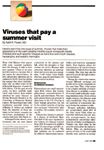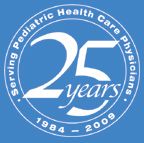Then and Now: Viruses that pay a summer visit
A review of viruses that are prevalent and plague children in the summertime.
Where are they now?

The "viruses that pay a summer visit" a quarter of a century ago have not aged in their circulation or charisma. Keith R. Powell, MD's, article on these viral summer "visitors," the enteroviruses, published in Contemporary Pediatrics in June 1985, is still current and was prescient.1

Prime cause of suspected sepsis
Although multiple new viruses have been detected in the interim, the enteroviruses, as described by Powell, remain the prime cause of suspected sepsis in young children during the summer and fall. The respiratory viruses, especially influenza and RSV, predominate during the winter months, but not to the complete exclusion of the enteroviruses.
The clinical collage Powell constructed through his description and patient photographs is exceptional. Much of the continued and growing interest in the enteroviruses arises from their ability to effectively mime multiple syndromes. Powell painted their unusual collage by his careful assessment of the different clinical findings that may be observed by age, serotype, and within a single serotype.
Enterovirus association with HFMD
In the interim two decades, however, the variability and unpredictability of the enteroviruses' epidemiology and clinical manifestations observed globally have been recognized. Enterovirus 71 and the closely related coxsackie virus A16 are still the predominant enteroviruses associated with the common hand, foot, and mouth disease (HFMD) of childhood. Although outbreaks of enterovirus 71 had been noted in Eastern Europe in 1975 and 1978, the virus's subsequent generally mild mein over the next twenty years did not forecast the outbreaks of severe disease that erupted in Taiwan, Malaysia, and other Southeast Asian countries between 1997 and 2000.2
Enterovirus 71 was no longer just the agent of HMFD and other mild self-limited syndromes, but a potential viral Godzilla causing severe outbreaks of varied manifestations with striking neurovirulence, sequelae, and mortality.2